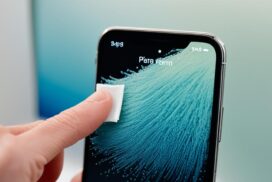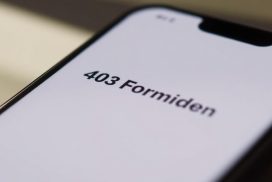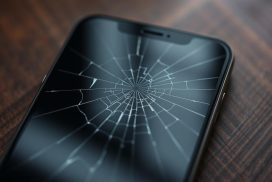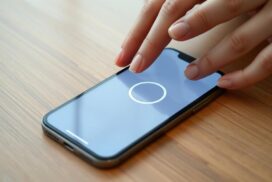Dealing with iPhone Signal Reception Issues
Many iPhone users in the United Kingdom have reported experiencing persistent signal reception issues, including weak signals, dropped calls, and unreliable internet connections. These issues can be frustrating and hinder the functionality of various apps. In this guide, we will explore some solutions to improve your iPhone’s signal reception and maintain a reliable connection.
Are you tired of constantly dealing with iPhone signal issues? Don’t worry, we’ve got you covered. In this section, we will discuss some practical tips and techniques to improve signal reception on your iPhone and ensure a reliable connection.
Whether you’re experiencing weak signals, dropped calls, or slow internet speeds, these solutions will help you overcome these challenges and enhance your iPhone experience. Let’s dive in!
Check Your Coverage Area
One of the first steps in addressing iPhone signal issues is to check your coverage area. It’s essential to ensure that you are in an area with sufficient cellular network coverage for optimal signal strength. Remember, the strength of your signal can vary depending on your location and proximity to cell towers. Therefore, it’s crucial to be in an area where you should have a strong signal.
To check your coverage area, there are a few options available. You can visit your network provider’s website and use their coverage map tool. This tool will provide a visual representation of the network coverage in different areas. Additionally, you can use smartphone apps specifically designed to measure cellular signal strength. These apps often display the signal strength in decibels (dBm) or bars, allowing you to gauge the quality of your signal.
If you find that you are consistently in an area with poor coverage, it may be worth exploring alternative network providers that offer better coverage in your region. Switching to a provider with a stronger network in your coverage area can significantly improve your iPhone’s signal reception and ensure a reliable connection.
Factors Affecting Coverage Area
Several factors can affect coverage area and signal strength. It’s essential to be aware of these factors to better understand and troubleshoot signal issues. Some of the common factors include:
- Distance from the nearest cell tower: The closer you are to a cell tower, the stronger your signal is likely to be.
- Obstacles: Physical barriers such as buildings, mountains, or thick vegetation can affect signal strength. These obstacles may block or weaken the signal, causing reception issues.
- Indoor versus outdoor signal strength: Signal strength may vary between indoor and outdoor areas. In some cases, signals may struggle to penetrate buildings, resulting in weaker indoor reception.
By understanding these factors and regularly checking your coverage area, you can proactively address signal issues and maintain a reliable connection on your iPhone.
Turn Off and On Cellular Data
If you are experiencing signal reception issues on your iPhone, try turning off and then back on your cellular data. This simple step can sometimes help refresh the connection and improve signal reception.
To do this, follow these steps:
- Go to Settings on your iPhone.
- Tap on Cellular or Mobile Data (depending on your iOS version).
- Toggle the Cellular Data option off.
- Wait for a few seconds.
- Toggle the Cellular Data option back on.
This process will temporarily disable your cellular data connection. By turning it off and then on again, you allow your iPhone to reconnect to the network, which can help improve the signal reception.
In some instances, signal issues can be caused by temporary network congestion or minor software glitches. Performing this action can help refresh the connection and establish a more stable signal for your iPhone.
| Pros | Cons |
|---|---|
| Quick and easy to perform | May not resolve deeper signal reception issues |
| No complex settings adjustments required | Requires turning off data temporarily |
| Can help refresh the connection | Dependent on network availability |
Remove and Re-insert the SIM Card
If you’re experiencing signal issues on your iPhone, one of the potential solutions is to remove and re-insert the SIM card. The SIM card plays a crucial role in determining signal strength and network connectivity. Follow these steps to ensure a proper re-insertion:
- Gently turn off your iPhone before proceeding.
- Locate the SIM card tray on the side of your device.
- Insert a SIM card removal tool or a small paperclip into the provided hole on the SIM card tray. Apply gentle pressure to eject the tray.
- Remove the SIM card from the tray and inspect it for any dirt, dust, or debris. If necessary, use a clean, soft cloth to wipe the SIM card gently.
- Place the SIM card back into the tray, ensuring that it aligns correctly with the designated slot.
- Carefully re-insert the SIM card tray back into your iPhone until it clicks into place.
- Power on your device and wait for it to establish a connection with your network.
This process helps to address any potential issues caused by a loose or improperly inserted SIM card. By ensuring a secure and clean connection, you can improve signal strength and optimize network connectivity for your iPhone.
Update iOS to the Latest Version
Keeping your iPhone’s operating system up to date can help address signal reception issues. Apple frequently releases software updates that include bug fixes and enhancements. Updating to the latest version of iOS can resolve software bugs that may be interfering with your iPhone’s signal reception.
Why Update iOS?
Updating your iPhone’s iOS is crucial for maintaining optimal performance and addressing any potential software bugs that could be causing signal interference. Apple regularly releases updates to improve the overall functionality and stability of iOS, ensuring a seamless user experience.
Software bugs can affect various aspects of your iPhone’s performance, including signal reception. These bugs can cause signal drops, weak connections, and other issues that disrupt your ability to make calls or access the internet.
How to Update iOS
- Connect your iPhone to a stable Wi-Fi network.
- Go to Settings.
- Scroll down and tap on General.
- Select Software Update.
- If an update is available, tap on Download and Install.
- Follow the on-screen instructions to complete the installation process.
It is essential to ensure that your iPhone has enough battery life or is connected to a charger during the update process. This will prevent any interruptions and ensure a smooth installation.
The Benefits of Updating iOS
Updating to the latest version of iOS can provide several benefits, including:
- Fixing software bugs that may be causing signal interference.
- Improving overall system performance and stability.
- Introducing new features and enhancements to enhance user experience.
- Enhancing security measures to protect your device and data.
By regularly updating your iPhone’s iOS, you can ensure that your device operates optimally, with improved signal reception and a more reliable connection.
| Benefits of Updating iOS | |
|---|---|
| Fixing software bugs | ✓ |
| Improving system performance | ✓ |
| Introducing new features | ✓ |
| Enhancing security | ✓ |
Reset Network Settings
If you are still experiencing signal issues on your iPhone, resetting your network settings can be a helpful solution. The process is simple and can be done in a few easy steps:
- Open the Settings app on your iPhone.
- Tap on General.
- Select Reset.
- Choose the option to Reset Network Settings.
This reset will clear any saved Wi-Fi networks, cellular settings, VPN configurations, and APN settings that might be causing signal interference. After the reset, your iPhone will revert back to the default network settings, allowing you to start afresh with your network connections.
It’s important to note that resetting your network settings will not delete any personal data or media from your device. However, you will need to reconnect to Wi-Fi networks and reenter any Wi-Fi passwords.
If you’d like to visualize the steps, here’s a table summarizing the process:
| Steps to Reset Network Settings | |
|---|---|
| Open the Settings app | On your iPhone |
| Tap on General | |
| Select Reset | |
| Choose Reset Network Settings |
Once you have completed the reset, you can check if the signal issues have been resolved and if your iPhone is now able to connect to Wi-Fi networks and cellular data more reliably. Remember, this step should be taken if other solutions haven’t resolved the problem, as it may require you to reconfigure certain network settings.
Contact Your Carrier
If none of the previous solutions have resolved your iPhone’s signal reception issues, it may be time to contact your wireless carrier. Issues with your carrier or account can affect your service. Reach out to your carrier to verify that your account is active, check for network outages in your area, and ensure that your device is correctly set up with the right data plan.
If you are experiencing ongoing signal problems, your carrier may be able to provide further assistance and troubleshooting steps. They can investigate any potential account issues and address network outages that may be affecting signal reception. They can also help ensure that your device is provisioned correctly with the appropriate network settings.
“Contacting your carrier is a crucial step in resolving persistent signal reception problems. They have the expertise and resources to help you troubleshoot and address any underlying issues that may be impacting your iPhone’s connectivity.”
In some cases, your carrier may suggest additional steps or recommend alternative solutions. Their dedicated support team can guide you through the process and provide personalized assistance based on your specific situation.
Remember to provide your carrier with accurate and detailed information about the signal reception issues you are experiencing. This will help them better understand the problem and offer targeted solutions.
Furthermore, it’s recommended to keep a record of any troubleshooting steps taken and the outcomes observed. This information can be valuable if further assistance is needed or if you choose to escalate the issue.
Key Takeaways
- If previous solutions haven’t resolved your signal reception issues, contact your wireless carrier
- Check for account issues and network outages in your area
- Ensure your device is correctly set up with the right data plan
- Your carrier can provide personalized assistance and troubleshooting guidance
Conclusion
Dealing with iPhone signal reception issues can be frustrating, but there are steps you can take to improve connectivity and maintain a reliable network. By checking your coverage area, turning off and on cellular data, removing and re-inserting the SIM card, updating iOS, resetting network settings, and contacting your carrier if necessary, you can address signal issues and ensure a smoother iPhone experience. It’s important to stay in an area with sufficient cellular network coverage to avoid weak signals and dropped calls.
Furthermore, refreshing your connection by turning off and on cellular data can help improve signal reception. If the problem persists, removing and re-inserting the SIM card can ensure a secure connection and prevent signal strength problems. Regularly updating your iOS to the latest version can fix software bugs that may interfere with your iPhone’s signal reception.
If none of these solutions work, resetting your network settings can clear any issues with Wi-Fi networks or cellular settings that may be affecting your signal. And if all else fails, reaching out to your wireless carrier to check for account issues or network outages in your area is recommended. Keeping your device updated and seeking assistance from Apple Support can also be beneficial for a reliable network connection.
FAQ
How do I check if I have iPhone signal issues?
One of the first steps is to check your coverage area. Make sure that you are in an area with sufficient cellular network coverage.
What should I do if I am experiencing signal reception issues on my iPhone?
Try turning off and then back on your cellular data. Go to Settings, tap on Cellular or Mobile Data, and toggle the cellular data option off. Wait for a few seconds, then turn it back on.
Can removing and re-inserting the SIM card help improve signal strength?
Yes, removing and re-inserting the SIM card can potentially solve signal strength problems. Gently remove the SIM card, clean it if necessary, and then re-insert it securely.
How can updating iOS improve signal reception?
Keeping your iPhone’s operating system up to date can help address signal reception issues. Apple frequently releases software updates that include bug fixes and enhancements.
What should I do if none of the previous solutions have resolved my signal reception issues?
You can try resetting your network settings. Go to Settings, tap on General, and select Reset. From there, choose the option to Reset Network Settings.
When should I contact my wireless carrier regarding signal issues?
If none of the previous solutions have resolved your iPhone’s signal reception issues, it may be time to contact your wireless carrier. Reach out to your carrier to verify that your account is active and check for network outages in your area.
How can I improve my iPhone’s signal reception?
By checking your coverage area, turning off and on cellular data, removing and re-inserting the SIM card, updating iOS, resetting network settings, and contacting your carrier if necessary, you can address signal issues and maintain a reliable network connection.












